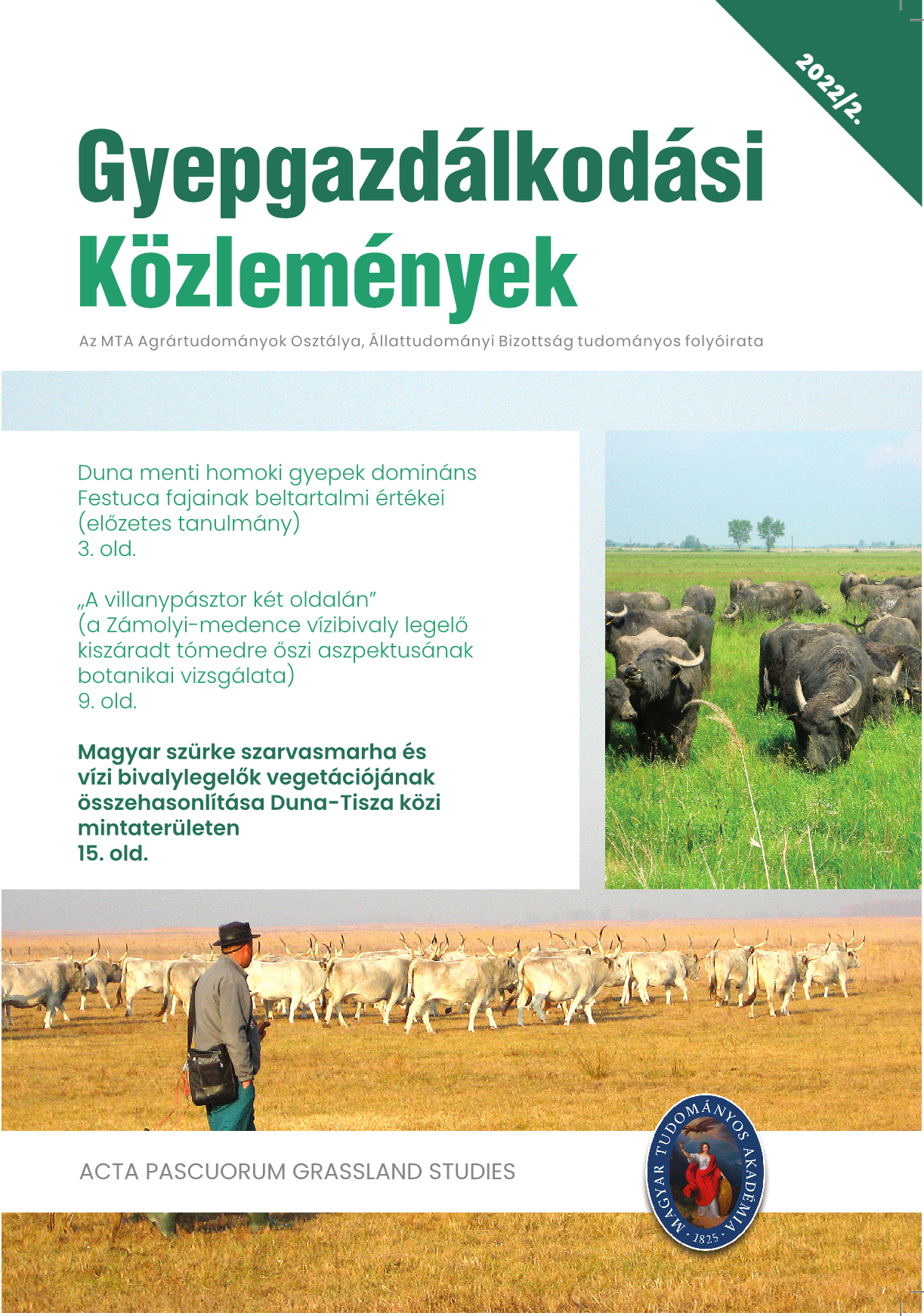Hosszú távú kaszálás hatása a vegetációra és a biomassza összetételére a Nyugat-Cserhát pannon száraz gyepeiben
Szerző
Megtekintés
Kulcsszavak
Licenc
Copyright (c) 2023 Gyepgazdálkodási Közlemények

This work is licensed under a Creative Commons Attribution-NonCommercial-NoDerivatives 4.0 International License.
Hogyan hivatkozzuk
Absztrakt
This study is focusing on the vegetation of seminatural dry grasslands. Those loess grasslands are valuable with large biodiversity; however their long-term preservation requires regular conservation management. The report demonstrates the results of mowing experiment, designed to suppress the spread of unpalatable grass species, Calamagrostis epigeios. The study site is located in mid-successional loss grasslands, in the Western-Cserhát, near Rád, northern Hungary.
The study aims to the investigate the followings: Can the unpalatable Calamagrostis epigejos be suppressed by mowing? Are there possibilities to increase the diversity of sward by this? The study aims, to measure potential value-increasing effect of mowing, and to determine the carrying capacity in the aspect of grassland management.
In 2001, Camagrostis epigeios was the species with the highest coverage rate according to the both treatment types, with an average cover value of 63%. However, as a result of mowing, a significant difference was detected in the amount of litter and legumes species as well. The number of species showed a slight increase in both types of treatment, from 15 to 37 in the mowed plots, but also from 18 to 27 in the control plots. We concluded that mowing twice a year was beneficial to modify botanical composition of a grassland. In a way it was suited well for agricultural usage, in particular grazing which can replace the expensive and time-consuming scythe. It is also a suitable management measure for controlling the native invader species as a Calamagrostis epigeios, and can significantly increase the proportion of species with higher forage values.
Mowing has significantly increased the density of Calamagrostis epigeios, the species richness, and the diversity in the course of secondary succession. Therefore, mowing twice a year proved to be a successful management measure for controlling Calamagrostis epigeios, and for obtaining a sward composition. The treatment was effective in restoring grassland composition, although the achievement and maintenance of favourable conservation status for the grassland habitat require long-term management planning and regular treatment. According to the objectives, mowing not only promotes the control of the invasive species, but also the economic utilization of the area.

 https://doi.org/10.55725/gygk/2022/20/2/11361
https://doi.org/10.55725/gygk/2022/20/2/11361